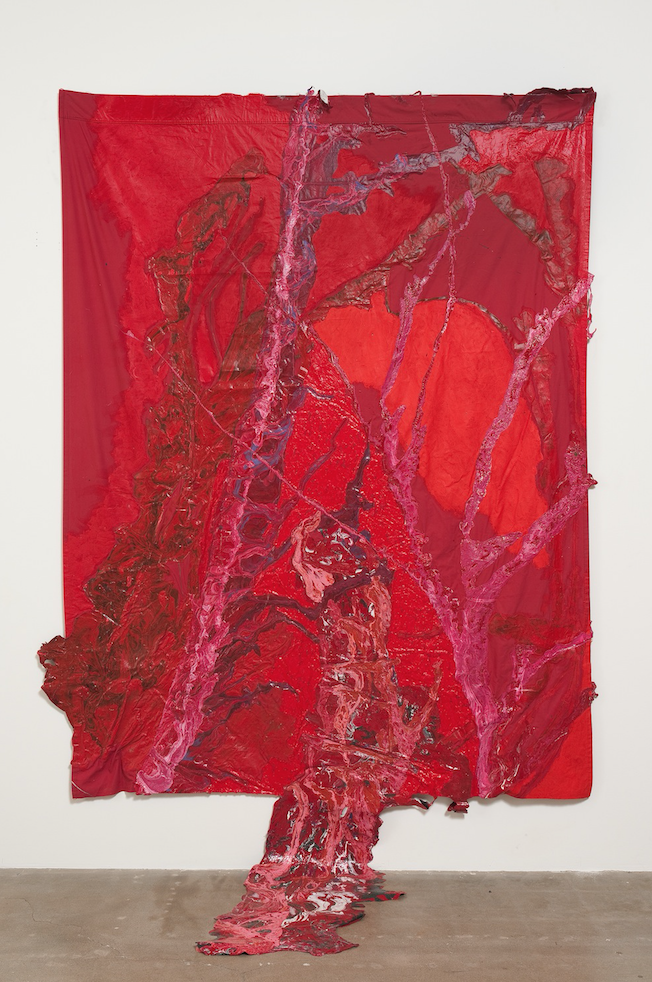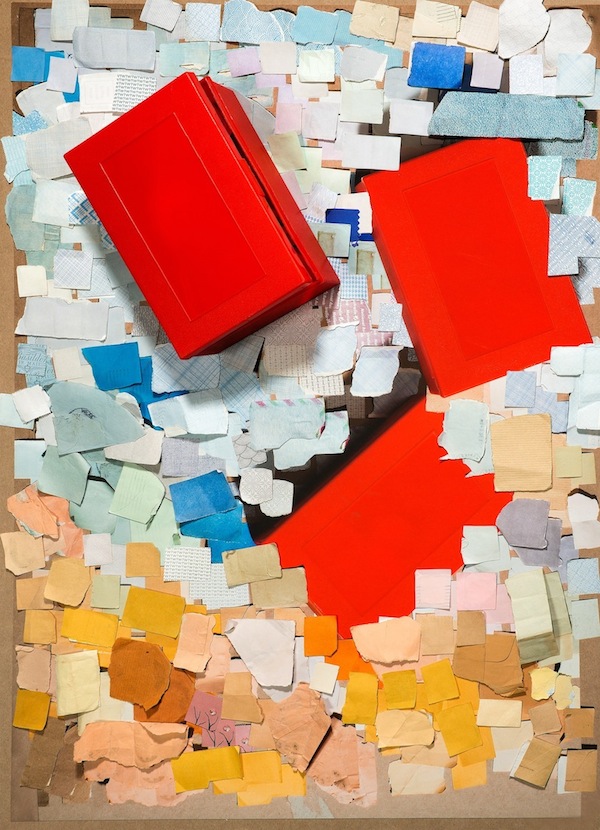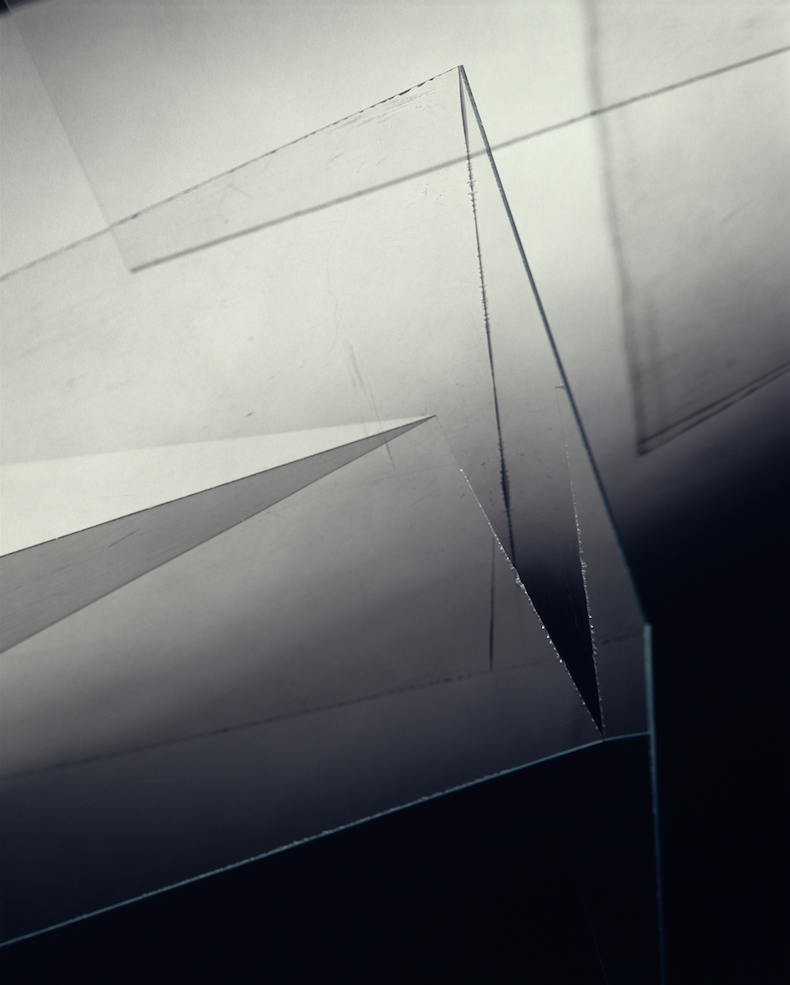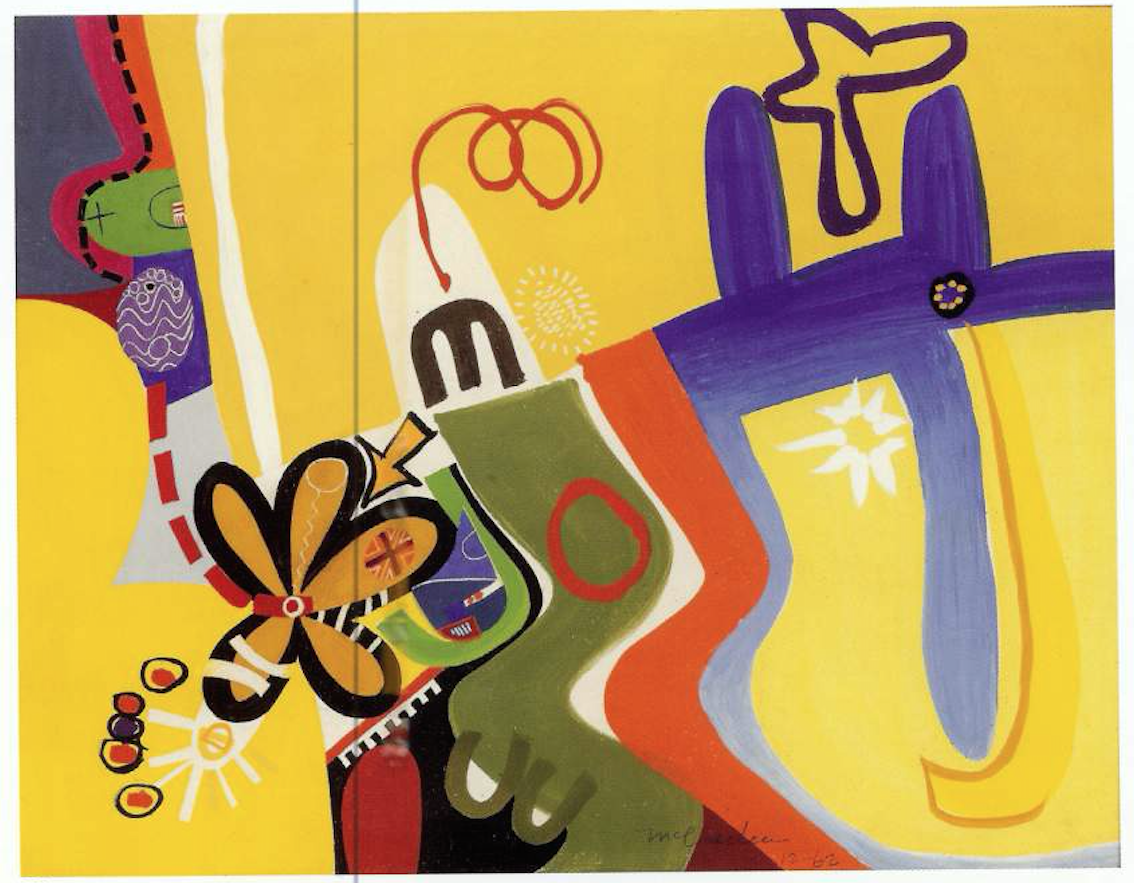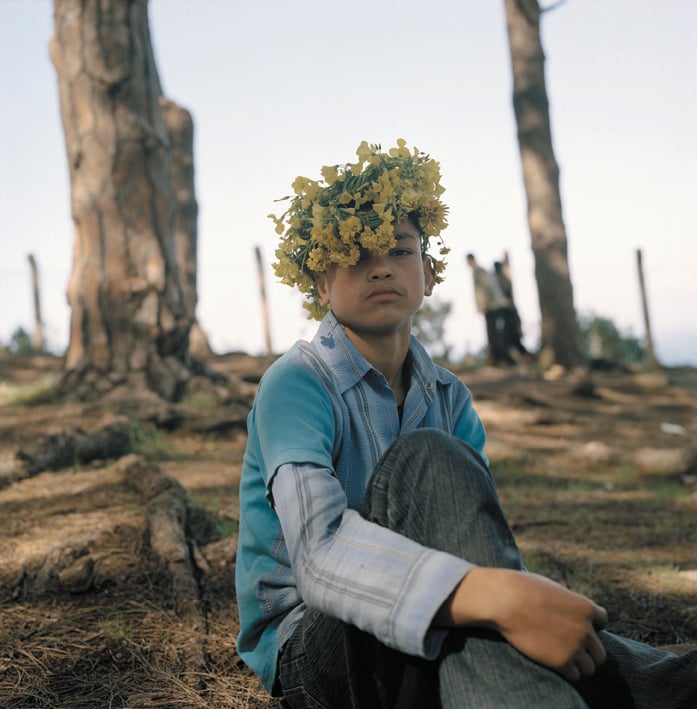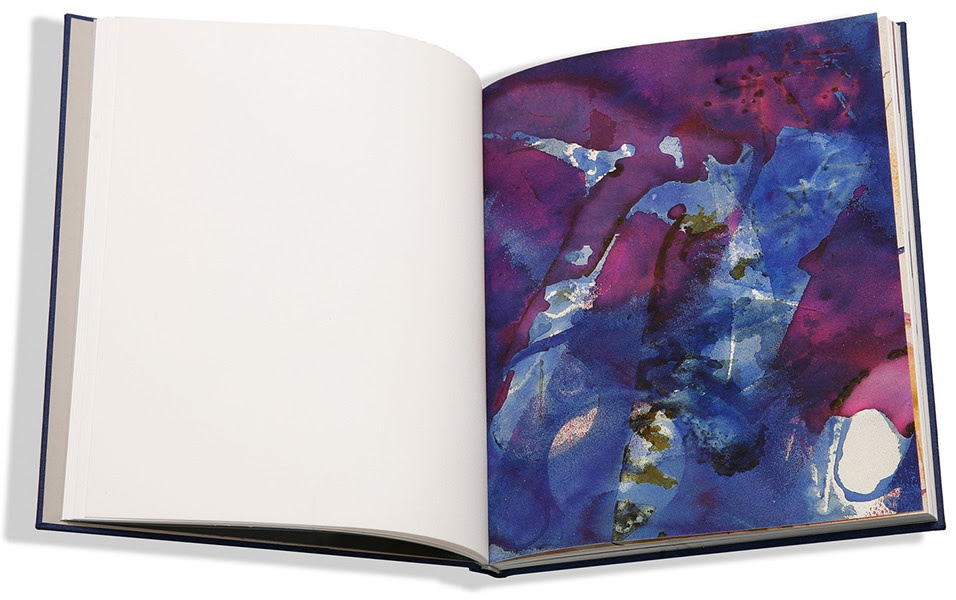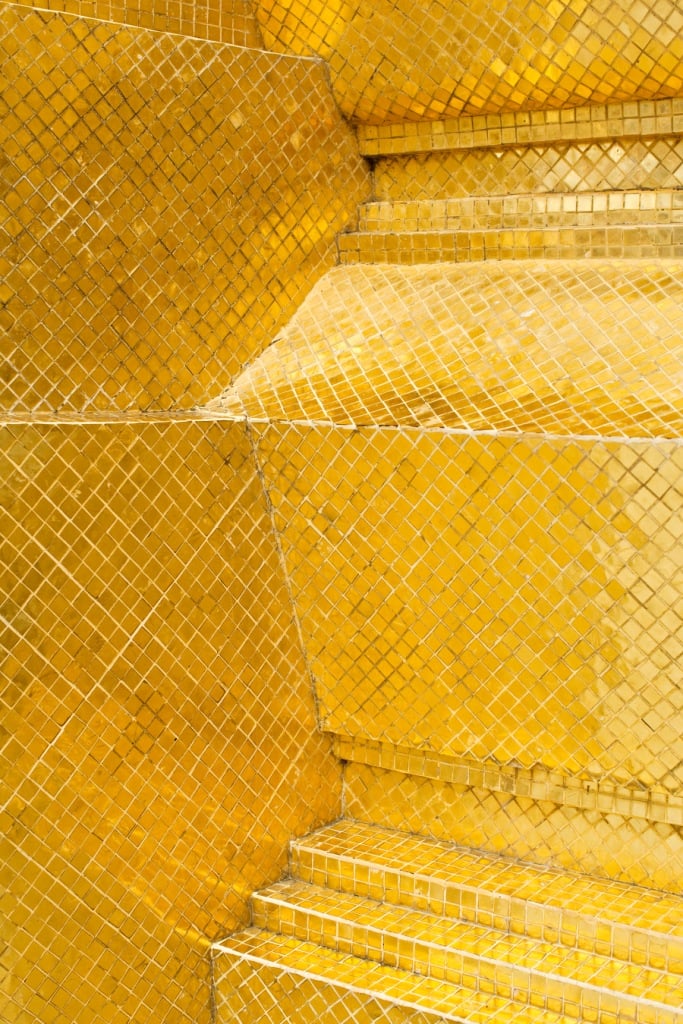
© » KADIST
Natan Lawson
Untitled (Bubbles) by Natan Lawson is produced by a marker with a ball-bearing tip, which is drained and refilled with a new color of acrylic paint for each layer. Untitled (Bubbles) is the result of collaging layers of imagery in the computer, before sending coordinates to the plotter which renders it, with some manual intervention of the canvas. Lawson thinks of the process as related to a computerized jacquard loom, where colors are woven and layered.

© » KADIST
Nick Mauss
Drawing & Print (Drawing & Print)
As in other Mauss’ works that often look unfinished, the drawings in Untitled seem ever at the phase of the sketch, his segments as if they may uproot and reorient themselves at any moment. Caught in this perpetual sort of unresolved action, Mauss’ works revel in ambiguity and indeterminacy.
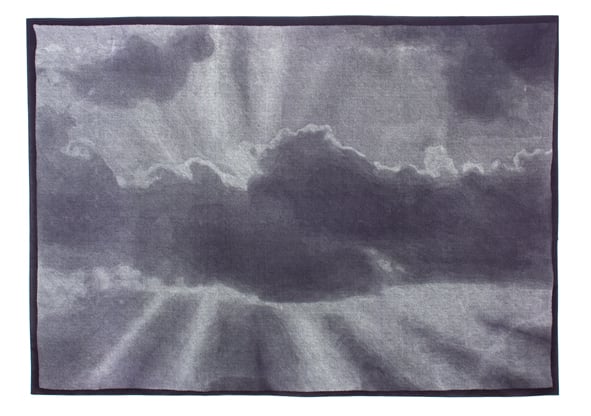
© » KADIST
Melvin Moti
Drawing & Print (Drawing & Print)
Cluster Illusion examines the brain’s tendency to recognize a pattern as something abstract. Rather than seeing the distinct dots of which the images are composed, our brains turn these dots into illusory clouds. This series is a study of human vision and a commentary on the human urge to find shapes and patterns in anything, giving coherence to the whole.

© » KADIST
Margo Wolowiec
Drawing & Print (Drawing & Print)
Wolowiec’s textile work Not This Time (2015) translates pixelated images into sensuous fabric and ink based forms that are at once beautiful in their abstraction and anxiety-ridden in their visualization of a malfunctioning digital world. In order to produce this work, Wolowiec selects a grouping of digital images from web-based sources that have a glitch, an aberration in which a short-lived technical fault results in distortions in an image’s display. Through a dye sublimination ink process, the images are printed onto strands of thread pixel by pixel, which the artist then weaves into a final work.

© » KADIST
Ruijun Shen
In Seven Deadly Sins (2006), Shen utilizes abstraction to produce complex topographies of color that evoke associations with violently tumultuous landscapes. Streaks of blue and burgundy paint scatter across a peach colored silk backdrop, dripping into rough floral and botanical forms. At once both diffuse and dense, Shen’s compositions feel both expansive and contained, the colors overlaid atop another with a seemingly free spontaneity that belies more ordered and considered deliberation.

© » KADIST
Marc Nagtzaam
Drawing & Print (Drawing & Print)
Nagtzaam’s medium is drawing and his repertory of forms varies from abstract hard-edge and wall drawing to the reproduction of written material that he collects from art magazines. The artist uses abstract architectural elements that he reproduces on the wall in which he inserts drawings, elements from photographs and drawings of texts collected from art magazines. The repetition, control and imperfection of the movements create a tension, a particular vibration in his geometrical drawings and in the drawings of texts.

© » KADIST
Ad Minoliti
G. S. F. C. #3 (Geometrical Sci-Fi Cyborg) belongs to a series of paintings that build upon the artist’s exploration into feminist speculative fiction and the cyborg as a creature of contemporary reality and fiction. The cyborg painting, as she calls it, is made through a smearing of human and machine in which the composition of color landscape with outlines of anthropomorphized forms is stenciled and airbrushed onto canvas, then photographed an printed onto canvas. Once this is done, Minoliti goes back over the printed canvas with paint.

© » KADIST
Elisabeth Wild
Drawing & Print (Drawing & Print)
Her collage works are made from the pages of glossy lifestyle magazines, from which the artist identifies colors, forms, and textures that she reconstitutes into rich, abstract compositions. Calling them her Fantasías, Wild’s collages rework the extravagances of consumer culture into beautiful, beguiling images of her own that seem to evoke unknown terrestrial landscapes, dreamlike architectures, and imaginary spaces. Elisabeth Wild’s colorful, bold, and lavish collages are the result of the artist’s daily practice.

© » KADIST
Stephen Beal
Beau Soleil #7 ’s title (translated as Beautiful Sun) gives a good sense of its effect. By virtue of a grid of dots, slightly different in size and placement, a subtle shimmering is created. In readily showing its effect as an image of light, the work exists between abstraction and representation—and perhaps points to the folly of such a distinction—rows and columns of spots become the dawn breaking through thick morning air.

© » KADIST
Mélanie Matranga
My Shape (2018) is the final work of the exhibition “Sorry”, taking the form of a Levi’s denim jacket pattern, expanded three or four times larger than its original shape. Adorned with different pockets, visible through the transparency of the paper and different light bulbs illuminating the form, white cables link the piece to hidden plug sockets, recalling a similar piece made by the artist for the 2015 Ricard Foundation prize. The work is representative of a series of recurrent concepts in the artist’s work manipulation of scale, abstraction through monumentalization, highlighting of tangential objects integrated like sculptural elements by the artist, in a way in which others might try and hide them, as well as the melding of the intimate alongside objects of mass production and the globalization of tastes.
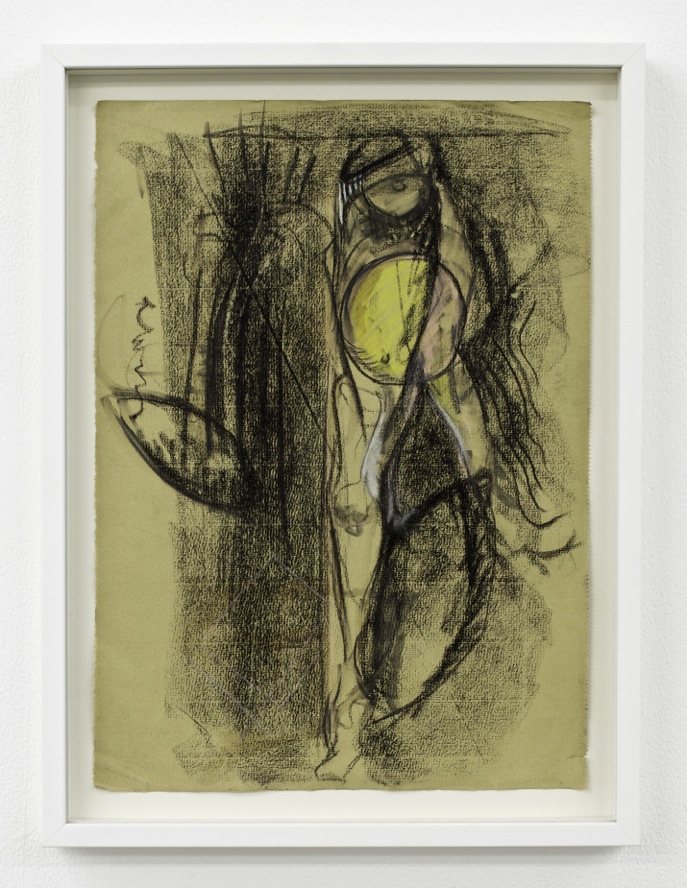
© » KADIST
Anne Imhof
Drawing & Print (Drawing & Print)
“School of the seven Bells (SOTSB)” is based on a series of hands games in which an object is passed from hand to hand. The performance is a reference to the film by Robert Bresson, “Pickpocket”, where a group of pickpocketers play with their victims. The artwork, through the actions of the hands, is an interrogation into space and time, questioning the relationship between public and private space, the establishment of communication through the body and visual exchange and gestures between aggression and sensuality.

© » KADIST
David Haxton
In the mid to late 70s David Haxton turned to photography, and similarly to his output in film, his photographs show reverberations of his perspective as a painter. As inferred from the title—and the titles of most of his work—Haxton has a methodical, near-scientific approach to studying and documenting the effects of light. In Holes in White and Holes in Cream with?

© » KADIST
Voluspa Jarpa
To make Minimal Secret (2012), Jarpa created sculptures based on pages of declassified CIA information about the United States’ involvement in Chile. The cutouts in the acrylic represent the content that was blacked out when the pages were released to the public. For Jarpa, that so much content from these documents was deleted before declassification is symptomatic of hysterical behavior, which, in Freudian psychoanalysis, results from the inability to deal with trauma.

© » KADIST
Eileen Quinlan
Eileen Quinlan’s abstracted images, like Swipe , rely on the manipulation of photographic materials inside the studio itself, and reject the exterior world for complex interrogations of the medium.

© » KADIST
Etel Adnan
Adnan’s paintings are simple images with bold contrasting colors and rich textures. This particular work has an iconic feel and a strong physical presence in spite of its diminutive size. All of her paintings are small but, like Howard Hodgkin’s work, their intensity gains from their diminutive size.

© » KADIST
Francisco Herrero Peñuela
Francisco Herrero Peñuela uses old forms to make his elaborate, richly textured surfaces. Practicing a form of marquetry common in 15th century Italy—intarsia—Peñuela pieces together fragments of wood to create abstract images in warm tones of gold, brown, and black. While original Italian intarsia would have been representational, embedding landscapes, objects, and narrative scenes directly into walls, Peñuela’s compositions hedge away from direct representation, with shapes and pattern emerging organically out of his carefully arranged wooden pieces.

© » KADIST
Shahryar Nashat
Employing both the High Modernist technique of abstraction and monochronism, as in the work of Lucio Fontana and Yves Klein, and bodily states of fetishization, Yea High (sweetpreparator) reworks the art historical canon of movement and the body to consider flesh as a physical construction of man-made matter. In the work, the artist uses perspiration as a medium on the surface, combing the man-made and the organic. The pink of the surface reflects the artist’s interest in reframing the way we understand the permeability of human skin.

© » KADIST
Jean-Luc Moulène
Head Box by J ean-Luc Moulène i s not the representation of a space but a real space that remains in the domain of sculpture which the artist develops in parallel with his photographic practice. Created for an exhibition in Kitakyushu in Japan, it is painted green, a color that symbolizes life and creation in Japanese culture. Even though we are confronted with a hollow presence, this is above all a space to lodge a body in the vertical posture of the living.

© » KADIST
Davida Nemeroff
In one series, she considers issues of spectatorship at the Los Angeles Zoo. Box Stall (2013) shows the back end of a horse, highlighting what is included and excluded from the frame of vision.
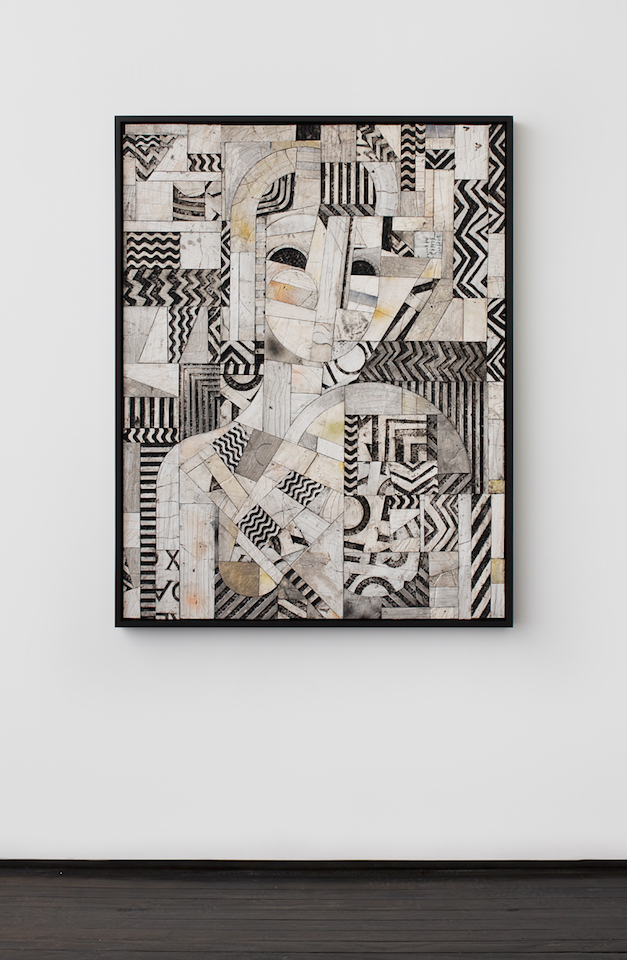
© » KADIST
Ruby Sky Stiler
The depiction of the female figure in the sculptures remains an economic, canny composition of geometric abstractions in a Modernist spirit. Yet rather than provide us with the layers of information found in her wall reliefs, the sculptures exclusively frame space. In place of the tactile surfaces that can be carved into and drawn on, the sculptures’ outlines provide multiple perspectives on to their surroundings, and additionally unto themselves.

© » KADIST
El Hadji Sy
El Hadji Sy is an important figure in the critical movement that followed Lépold Sedar Senghor´s Négritude ideology. Senghor supported El Hadji’s work from the start and continued to follow it, but they came together again in another cultural policy initiative, inaugurated by Senghor: the famous Villages des Arts. The village is a co-operative for artists in Dakar where each one has a professional studio.

© » KADIST
Rodrigo Torres
Drawing & Print (Drawing & Print)
In his Conceito abstrato series, however, Rodrigo Torres turns to the abstract, using the shapes, numbers, lines, and subtle colors of international currencies to create non-representational forms with lavish geometries and baroque curving forms.

© » KADIST
Caetano de Almeida
Caetano de Almeida’s abstract compositions in acrylic use delicately-rendered swirls of overlapping, colorful lines. Intersecting at regular angles within six bubbles, these thread-like lines spiral chaotically outward once they leave these spheres of order. De Almeida’s abstractions don’t imply randomness and chaos, the way much abstract painting might, but rather seem tied to algorithms, precision, and the networked realities of the contemporary moment.

© » KADIST
Walead Beshty
Black Curl (CMY/Five Magnet: Irvine, California, March 25, 2010, Fujicolor Cyrstal Archive Super Type C, EM No 165-021, 05910) is a visually compelling photogram. Bold shapes, and the breaks between them, create a rhythm and compose an engaging abstract image. At the same time, the work deals with the conditions of the photograph’s manufacture.
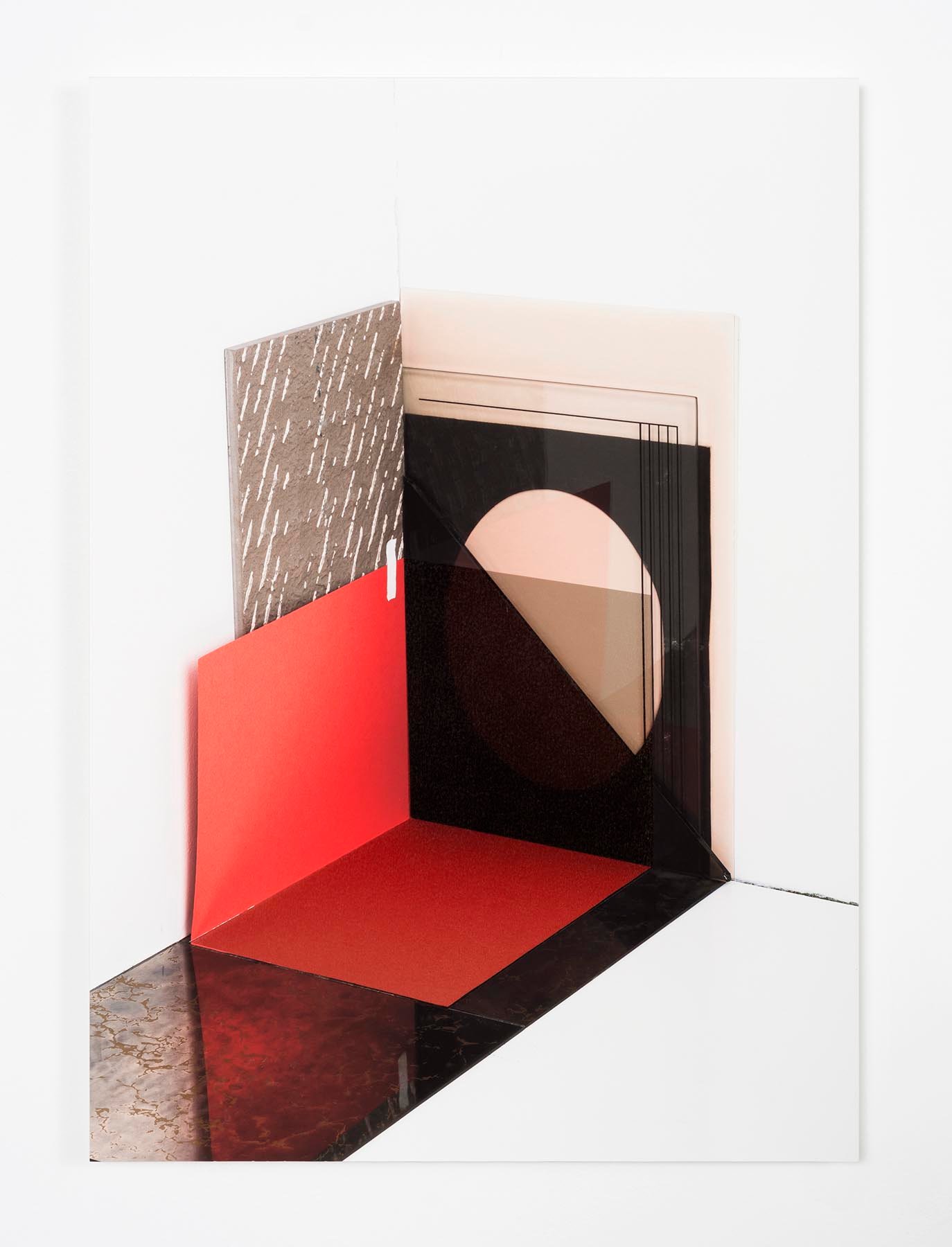
© » KADIST
Phillip Maisel
While his works can function as abstract, they are very much rooted in physicality and the possibilities that are inherent in the materials themselves. Elements used in various stages of photographic processes (color filters, glassine, and prints themselves) are integrated back into the artwork either as part of the sculpture or as collage elements that are later added to the print. In some of the works, Maisel cuts into the prints themselves.

© » KADIST
Pia Camil
Camil has made numerous paintings and photographs of halted projects along Mexico’s highways (she calls them “highway follies”), and of abandoned billboards that look like theater curtains dramatizing failed capitalist strategies. (Espectacular, the colloquial Spanish term for “billboard,” also translates more literally as “spectacle,” and of course recalls Guy Debord’s famous 1967 book The Society of the Spectacle .) In Mexico, the urban landscape has been taken over by billboards; they are totally integrated into the landscape.

© » KADIST
Lucas Blalock
Drawing & Print (Drawing & Print)
Blalock resists the immediacy that we have come to expect from photography—that each photograph should communicate its message without delay. Within the dark obscurity of three, three, three (2013), he frustrates and complicates this conditioned response to the photographic medium, questioning the photograph’s purpose.

© » KADIST
Yto Barrada
In this photographic series, Yto Barrada was interested in the logos of the buses that travel between North Africa and Europe. They become like abstract paintings that recall Modernist formal experimentation. They are somehow symptomatic of the circulation of goods and people that is made to sound so abstract.

© » KADIST
Jonathan Monk
Untitled (rolled up) , is an abstract portrait of Owen Monk, the artist’s father and features an aluminum ring of 56.6 cm in diameter measuring 1.77 cm in circumference, the size of his father. Jonathan Monk bridges a conceptual art and his family privacy, and ironically ensures that there is “no difference between Sol Lewitt and my mother, he does not know more than she do not know. ” What is the status of the O-backed chair rail to the white cube?
Alexandre da Cunha
- location: London, United Kingdom
- year born: 1969
- gender: male
- nationality: Brazilian
- home town: Rio de Janeiro, Brazil
Chris Wiley
- location: New York, New York
- year born: 1981
- gender: male
- nationality: British
Luisa Lambri
- location: Los Angeles, California
- year born: 1969
- gender: female
- nationality: Italian
- home town: Como, Italy
Margo Wolowiec
Margo Wolowiec uses her multidisciplinary practice to examine space, material versus conceptual practices, and affective responses...
Eileen Quinlan
Eileen Quinlan makes photographic images through unusual processes, stripping the medium down to its essentials, and working experimentally with light, lenses, chemicals, reflections, and shadows...
Federico Herrero
- location: San Jose, Costa Rica
- year born: 1978
- gender: male
- nationality: Costa Rican
- home town: San Jose, Costa Rica
Davida Nemeroff
Davida Nemeroff turns her camera toward scenes from everyday life, creating compositions within the frame of her lens that are strong, even introspective...
Rodney McMillian
- location: Los Angeles, California
- year born: 1969
- gender: male
- nationality: American
- home town: Columbia, South Carolina
Ruby Sky Stiler
Ruby Sky Stiler has established a visual language in which historical periods, art movements, and spatial dimensions readily coexist...
Ad Minoliti
Ad Minoliti is a painter who combines the pictorial language of geometric abstraction with the perspective of queer theory...
El Hadji Sy
Born in Senegal in 1954, El Hadji Sy (El Sy) studied fine arts at the Ecole Nationale des Beaux-Arts in Dakar...
Marc Nagtzaam
1968, Helmond, the Netherlands...
John Houck
- year born: 1977
- gender: male
- nationality: American
- home town: South Dakota
Shahryar Nashat
The work of Shahryar Nashat (b...
Rodrigo Torres
Brazilian artist Rodrigo Torres has been deconstructing international paper currencies to form intricate collages of color, line, shape, and texture for several years...
Pia Camil
- year born: 1980
- gender: female
- nationality: Mexican
- home town: Mexico City, Mexico
Voluspa Jarpa
Voluspa Jarpa’s work is based upon a meticulous analysis of political, historical, and social documents from Chile and other Latin American countries, which she uses to develop a reflection on the concept of memory...
Mark Grotjahn
- location: Los Angeles, California
- year born: 1968
- gender: male
- nationality: American
- home town: Pasadena, California
Ruijun Shen
Ruijun Shen conceptualizes her painting-based practice as a form of extended meditation and a means of processing tensions between time and space in the world around us...
Lucas Blalock
- year born: 1978
- nationality: American
- home town: Asheville, North Carolina
Natan Lawson
Producing hybrid artworks at the intersection of drawing and painting, Natan Lawson’s work exists in between hand-made and computer-processed...
Barbara Kasten
- year born: 1936
- gender: female
- nationality: American
- home town: Chicago, Illinois
Phillip Maisel
- location: San Francisco, California
- year born: 1981
- gender: male
- nationality: American
- home town: Chicago, Illinois
Nick Mauss
There is a frenetic energy to the work of American artist Nick Mauss, whose drawings, sculptures, performances, and installations often exceed their own boundaries...
Jonathan Monk
- location: Berlin, Germany
- year born: 1969
- gender: male
- nationality: British
- home town: Leicester, United Kingdom
John McCracken
- year born: 1934
- gender: male
- nationality: American
- home town: Berkeley, California
Walead Beshty
- location: Los Angeles, California
- year born: 1976
- gender: male
- home town: London, United Kingdom
Yto Barrada
- location: Tangier, Morocco
- year born: 1971
- gender: male
- nationality: French-Moroccan
- home town: Paris, France
-
1980-1989
El Hadji Sy
1981El Hadji Sy is an important figure in the critical movement that followed Lépold Sedar Senghor´s Négritude ideology...
-
2000-2009
Luisa Lambri
2002Lambri’s careful framing in Untitled (Miller House, #02) redefines our understanding of this iconic mid-century modernist building located in Palm Springs, California...
Mark Grotjahn
Drawing & Print
2002(Drawing & Print) This particular drawing, like many of Grotjahn’s works, presents a decentered single-point perspective...
Jonathan Monk
2003Untitled (rolled up) , is an abstract portrait of Owen Monk, the artist’s father and features an aluminum ring of 56.6 cm in diameter measuring 1.77 cm in circumference, the size of his father...
Yto Barrada
2004In this photographic series, Yto Barrada was interested in the logos of the buses that travel between North Africa and Europe...
David Haxton
2005In the mid to late 70s David Haxton turned to photography, and similarly to his output in film, his photographs show reverberations of his perspective as a painter...
Ruijun Shen
2006In Seven Deadly Sins (2006), Shen utilizes abstraction to produce complex topographies of color that evoke associations with violently tumultuous landscapes...
Luisa Lambri
2007Custom-built for a silent film star in 1934 in Santa Monica, the Sten-Frenke House is an idiosyncratic icon...
Barbara Kasten
2008Barbara Kasten’s Studio Construct 51 depicts an abstract still life: a greyscale photograph of clear translucent panes assembled into geometric forms, the hard lines of their edges converging and bisecting at various points...
Jean-Luc Moulène
2009Head Box by J ean-Luc Moulène i s not the representation of a space but a real space that remains in the domain of sculpture which the artist develops in parallel with his photographic practice...
Federico Herrero
2009Federico Herrero’s energetic paintings reflect his experiences on the streets of his native San José, Costa Rica, and in the surrounding tropical landscape...
-
2010-2019
Stephen Beal
2010Beau Soleil #7 ’s title (translated as Beautiful Sun) gives a good sense of its effect...
Etel Adnan
2010Adnan’s paintings are simple images with bold contrasting colors and rich textures...
Walead Beshty
2010Black Curl (CMY/Five Magnet: Irvine, California, March 25, 2010, Fujicolor Cyrstal Archive Super Type C, EM No 165-021, 05910) is a visually compelling photogram...
Alexandre da Cunha
2010In Laissez-Faire (Rainbow Flag) da Cunha has turned a beach towel into both a painting and a flag...
Alexandre da Cunha
2011The series West (Flag 1), West (Flag 3), and West (Flag 6) continues da Cunha’s ongoing exploration of the form’s various vertical, horizontal, and diagonal stripes...
Voluspa Jarpa
2012To make Minimal Secret (2012), Jarpa created sculptures based on pages of declassified CIA information about the United States’ involvement in Chile...
Chris Wiley
2012Architectural details become abstracted renderings in Chris Wiley’s inkjet prints 11 and 20 (both 2012)...
Chris Wiley
2012Architectural details become abstracted renderings in Chris Wiley’s inkjet prints 11 and 20 (both 2012)...
Anne Imhof
Drawing & Print
2013(Drawing & Print) “School of the seven Bells (SOTSB)” is based on a series of hands games in which an object is passed from hand to hand...
Caetano de Almeida
2013Caetano de Almeida’s abstract compositions in acrylic use delicately-rendered swirls of overlapping, colorful lines...
Lucas Blalock
Drawing & Print
2013(Drawing & Print) Blalock resists the immediacy that we have come to expect from photography—that each photograph should communicate its message without delay...
Rodney McMillian
2013In his evocative Landscape Paintings, McMillian uses second-hand bedsheets, sourced from thrift shops, as his starting point...
Brian Bress
2013Blindseye Arranger (Max) (2013) features a greyscale arrangement of rudimentary shapes layered atop one another like a dense cluster of wood block prints, the juxtaposition of sharp lines and acute angles creating an abstracted field of rectangular and triangulated forms composed as if in a cubist landscape...
Marc Nagtzaam
Drawing & Print
2014(Drawing & Print) Nagtzaam’s medium is drawing and his repertory of forms varies from abstract hard-edge and wall drawing to the reproduction of written material that he collects from art magazines...
Francisco Herrero Peñuela
2014Francisco Herrero Peñuela uses old forms to make his elaborate, richly textured surfaces...
Nick Mauss
Drawing & Print
2015(Drawing & Print) As in other Mauss’ works that often look unfinished, the drawings in Untitled seem ever at the phase of the sketch, his segments as if they may uproot and reorient themselves at any moment...
Melvin Moti
Drawing & Print
2015(Drawing & Print) Cluster Illusion examines the brain’s tendency to recognize a pattern as something abstract...
Margo Wolowiec
Drawing & Print
2015(Drawing & Print) Wolowiec’s textile work Not This Time (2015) translates pixelated images into sensuous fabric and ink based forms that are at once beautiful in their abstraction and anxiety-ridden in their visualization of a malfunctioning digital world...
Elisabeth Wild
Drawing & Print
2015(Drawing & Print) Her collage works are made from the pages of glossy lifestyle magazines, from which the artist identifies colors, forms, and textures that she reconstitutes into rich, abstract compositions...
Shahryar Nashat
2015Employing both the High Modernist technique of abstraction and monochronism, as in the work of Lucio Fontana and Yves Klein, and bodily states of fetishization, Yea High (sweetpreparator) reworks the art historical canon of movement and the body to consider flesh as a physical construction of man-made matter...
Ruby Sky Stiler
2015The depiction of the female figure in the sculptures remains an economic, canny composition of geometric abstractions in a Modernist spirit...
Phillip Maisel
2015While his works can function as abstract, they are very much rooted in physicality and the possibilities that are inherent in the materials themselves...
Eileen Quinlan
2016Eileen Quinlan’s abstracted images, like Swipe , rely on the manipulation of photographic materials inside the studio itself, and reject the exterior world for complex interrogations of the medium....
Rodrigo Torres
Drawing & Print
2016(Drawing & Print) In his Conceito abstrato series, however, Rodrigo Torres turns to the abstract, using the shapes, numbers, lines, and subtle colors of international currencies to create non-representational forms with lavish geometries and baroque curving forms....
Pak Sheung Chuen
Drawing & Print
2017(Drawing & Print) The series Nightmare Wallpapers represents a shift if Chuen’s practice, allowing the artist to immerse himself in an “artistic pilgrimage of self healing” following the failure of the 2014 Umbrella Movement...
Mélanie Matranga
2018My Shape (2018) is the final work of the exhibition “Sorry”, taking the form of a Levi’s denim jacket pattern, expanded three or four times larger than its original shape...





